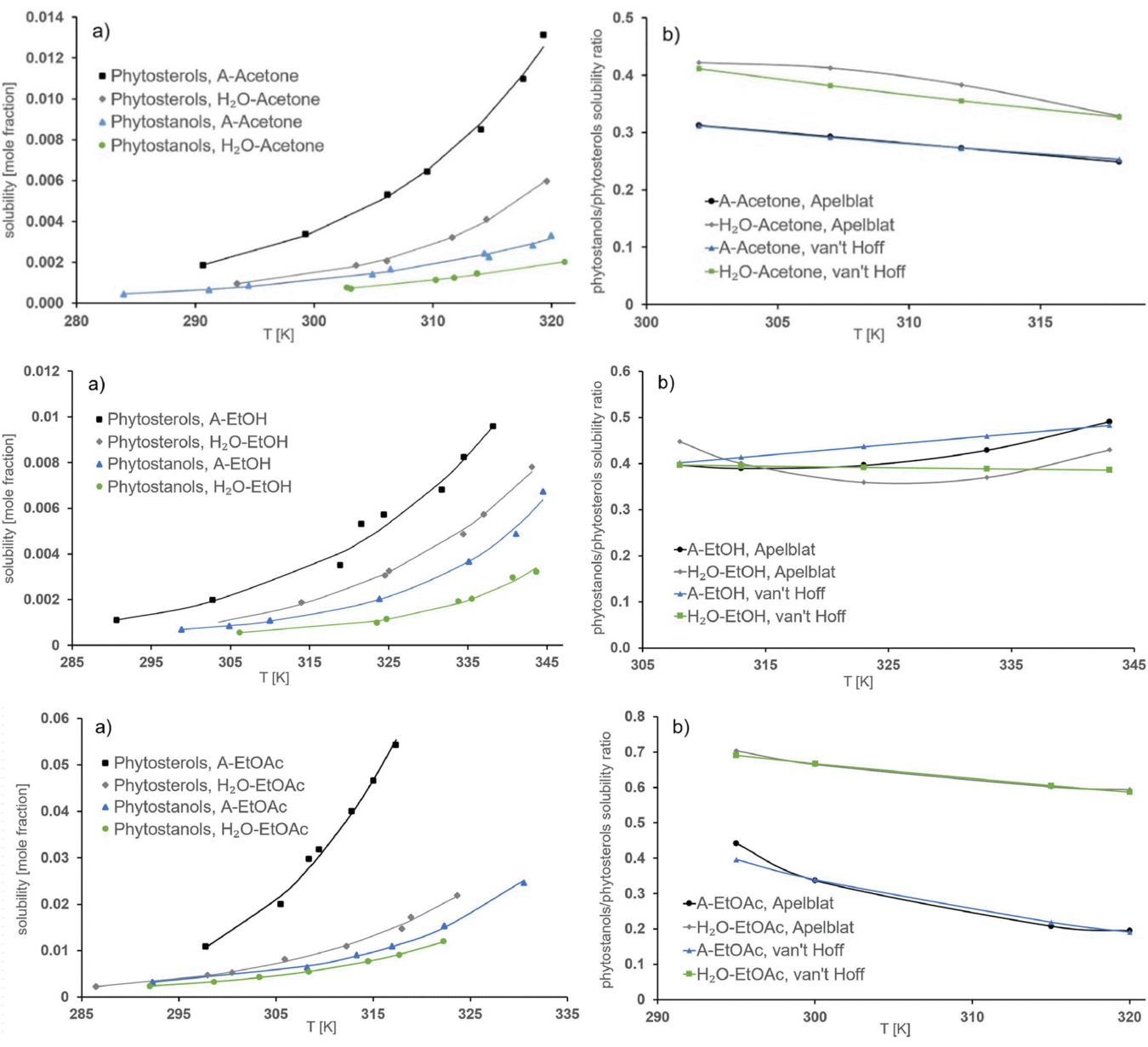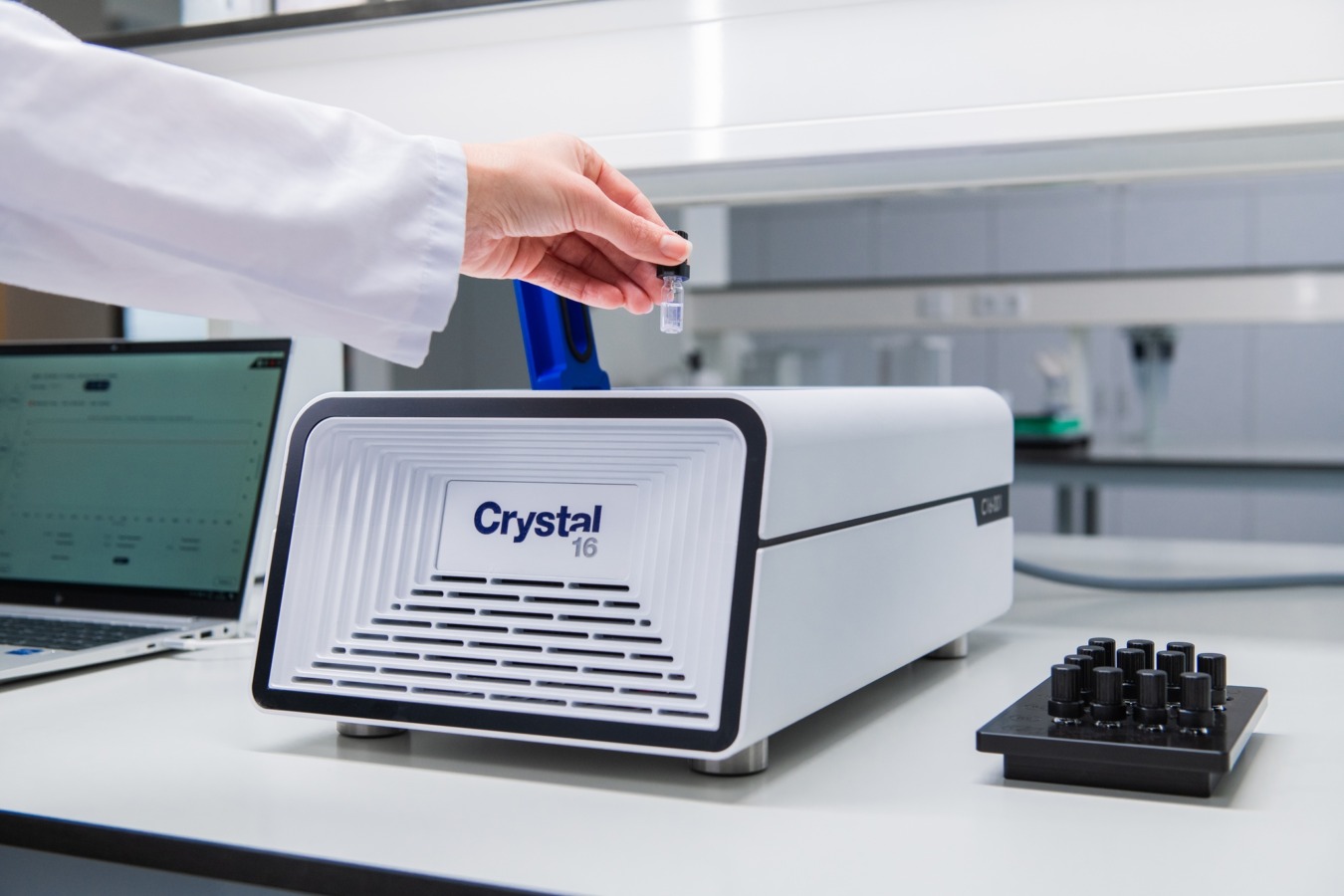Phytosterols and phytostanols, essential plant-based biomolecules, are widely used in pharmaceuticals, food, and cosmetics due to their cholesterol-lowering properties. Their solubility, influenced by solvent type, temperature, and water content, is crucial for optimizing crystallization processes.
We present a study carried out by a team of researchers at Aalto University, School of Chemical Engineering and Stora Enso International, Biomaterials Division, in Finland [1].
The study demonstrates that small water additions to organic solvents significantly reduce solubility, with a greater impact on phytosterols than on phytostanols. Using transmissivity measurements and solubility models, it provides the systematic solubility profiles of phytosterols and phytostanols in binary systems, offering valuable insights for enhanced industrial applications.

Experimental set-up: Solubility measurement with Crystal16
Solubility measurements of dried phytosterols and phytostanols were performed in acetone, ethyl acetate, and ethanol, with and without water, using a Crystal16 parallel crystallizer equipped with laser transmissivity monitoring (620 nm) to detect crystallization and dissolution points. Samples were prepared in 1 mL vials with controlled heating/cooling rates (0.5 °C/min) and stirring (700 rpm). Solubility temperatures were determined based on clear point detection over 4–5 heating/cooling cycles. The experimental solubility data were correlated with solubility models, including van’t Hoff, modified Apelblat, Buchowski-Ksiazaczak (λh), and polynomial equations (Figure 1).
Crystallization of phytosterols was carried out in a 100 mL reactor with controlled parameters (300 rpm, cooling rate 10 °C/h), and the products were analyzed using GC-FID to assess solubility effects on composition and yield.

Figure 1: Solubilities of phytosterols (a) and phytostanols (b) in solvents, with experimental data (symbols) and modified Apelblat model correlations (solid lines).
Results
The study found that the solubility of phytosterols and phytostanols increased with temperature but decreased significantly with the addition of water. Phytostanols consistently exhibited lower solubility than phytosterols across all solvents, with water narrowing this difference by more significantly reducing phytosterol solubility. Notable solubility reductions were observed at small water-to-solvent ratios of 0.17 for acetone, 0.13 for ethanol, and 0.10 for ethyl acetate, facilitating selective crystallization, as shown in Figure 2. Experimental solubility data closely matched the van’t Hoff and Apelblat models, validating observed trends in selective solubility behavior. Crystallization experiments demonstrated that water content significantly influenced product composition, with binary solvent systems such as water-acetone or water-ethyl acetate yielding different phytostanol-to-phytosterol ratios compared to pure solvents.

Figure 2: (a) Measured and correlated solubilities of phytosterols and phytostanols in various solvent systems, (b) with β-sitostanol-to-β-sitosterol ratios based on Apelblat and van’t Hoff models
Conclusion
The solubility of phytosterols and phytostanols in acetone, ethyl acetate, ethanol, and their water-based binary systems was experimentally measured using Crystal16 and analyzed with various models. The results revealed reduced solubility with water addition. These findings provide valuable insights for optimizing crystallization processes and improving product design for plant-based raw materials.

References
[1] Paula Översti, Bing Han, Jari Kavakka, Staffan Torssell, Esko Tirronen, Marjatta Louhi-Kultanen, Pekka Oinas. The effect of water on the crystallization of phytosterols and phytostanols in organic solutions.
European Journal of Pharmaceutical Sciences, Volume 204, 2025, 106956, ISSN 0928-0987, https://doi.org/10.1016/j.ejps.2024.106956
Curious to learn more?
Download the whitepaper "Solubility: Importance, Measurements and Applications" to learn more about generating effective and reproducible solubility data.